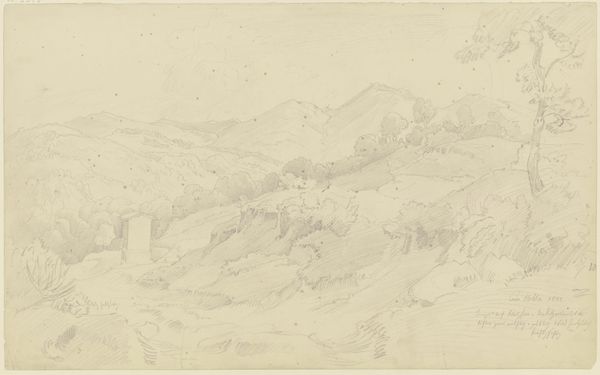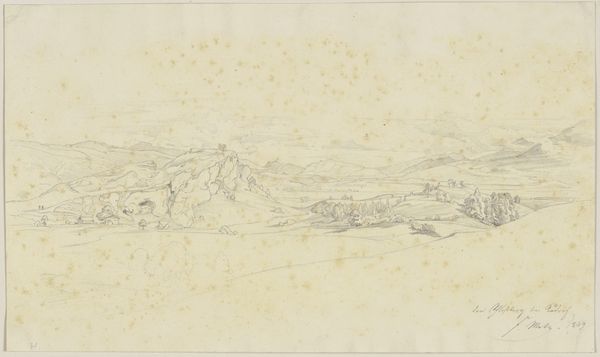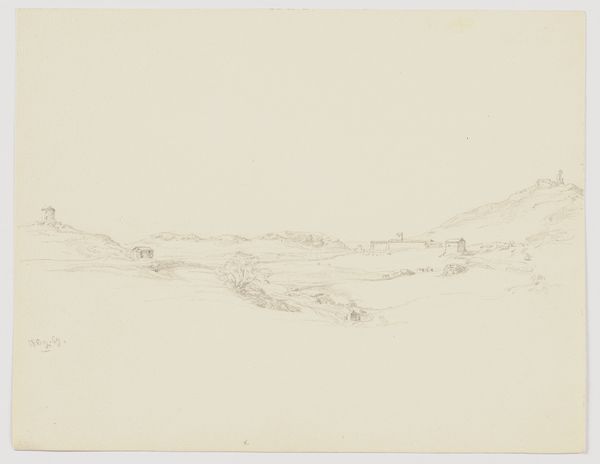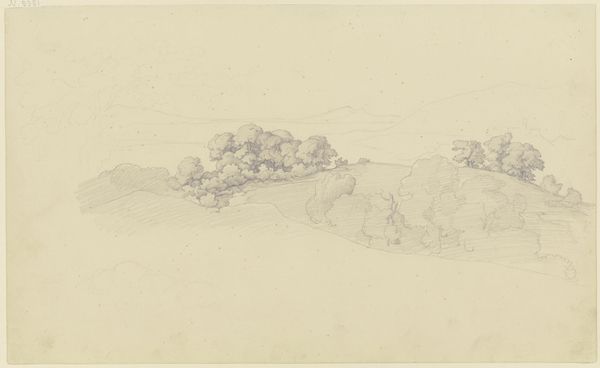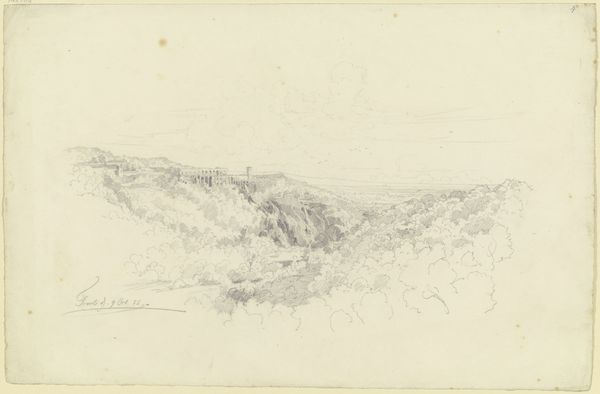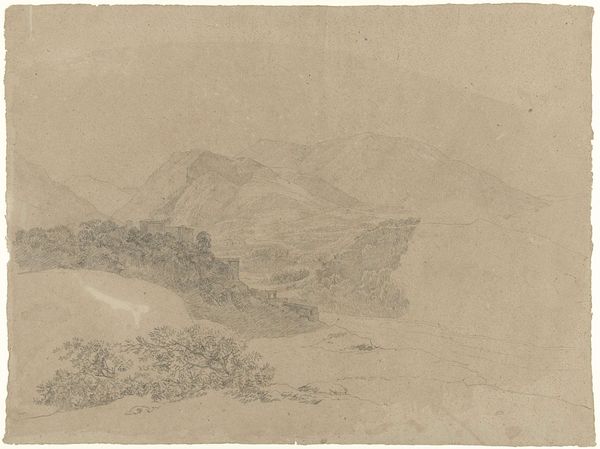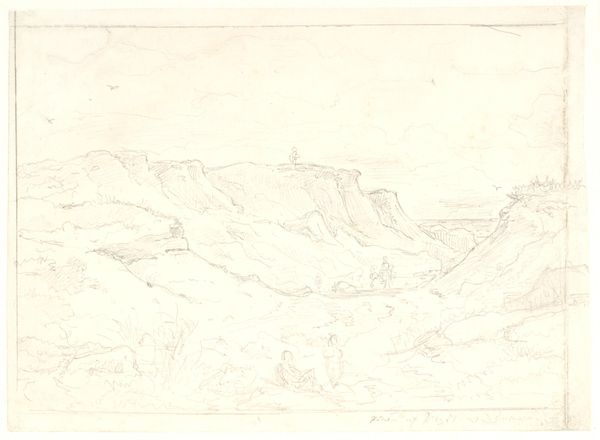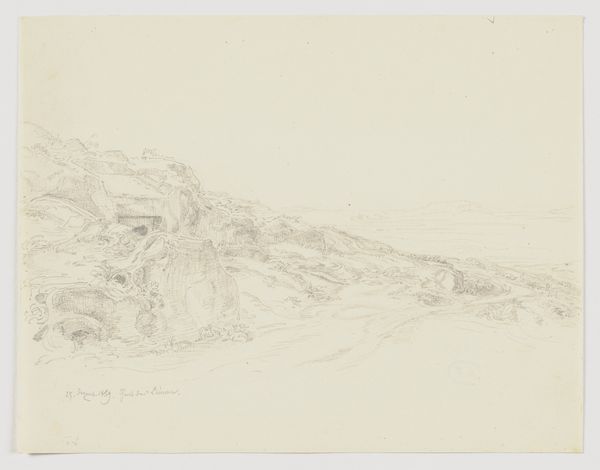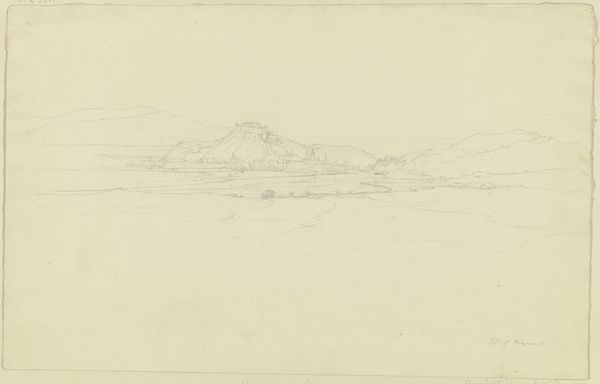
Copyright: Public Domain
Curator: This pencil drawing, "Sabiner Berge, im Mittelgrund zwei Künstler," was completed by August Lucas around 1830. The piece resides here at the Städel Museum. Editor: It’s breathtaking, really. The composition is open and airy, but it also feels remote. The tones are subdued; almost monochromatic, giving it a timeless feel. I see this stark beauty but also this overwhelming feeling of solitude and lack of resources. Curator: Absolutely, it's a prime example of the Romantic movement's fascination with nature's sublime power. We must recall the political landscape, particularly in Germanic lands, where nature became a sanctuary amid societal tensions. What we read today as ‘lack of resources’, in fact, speaks to that era and political agenda. Editor: Yes, and there's this incredible attention to detail in the rendering of the rocks and sparse vegetation. Did landscape become a kind of stand-in for human emancipation, then? A stage for what felt unachievable for marginalized populations during the same time period? Curator: That's very insightful. Artists during this period, Lucas included, did find freedom expressing themselves with untouched, awe-inspiring natural scenery, an escape of sorts. Also, landscape painting and drawing became more acceptable, were seen as less controversial than historical pieces with overt political messages, in that moment. Editor: That's very astute and something important to underscore today. But there are also two artists in the foreground! I’d almost missed them amidst this powerful landscape. The drawing suddenly feels…self-aware. What about art as a process, then, of decolonizing the narrative of ‘discovery’? Curator: The inclusion of those artists indeed changes the entire scope of the landscape. Perhaps those were other fellow painters accompanying him. In terms of reception, their presence serves as an important social commentary, almost suggesting our inherent connection and need for coexistence within this massive panorama. Editor: Absolutely, and a reminder that, even when seeking solace in nature, our social and political realities are invariably woven into our perceptions. To bear witness together is still such a defiant act of togetherness, after all. Curator: Agreed. And perhaps Lucas was trying to suggest exactly that! The image invites us to reflect on the complex relationship between nature, art, and social responsibility, from his perspective. Editor: Ultimately, this seemingly simple pencil drawing holds a wealth of complex and powerful ideas about humanity’s place in a wider natural and artistic framework.
Comments
No comments
Be the first to comment and join the conversation on the ultimate creative platform.

